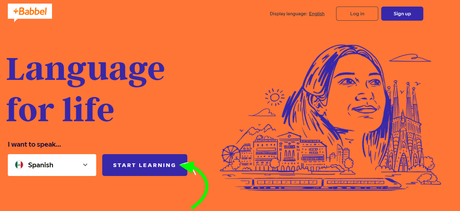Anyone who tries to learn a foreign language online must have heard of Duolingo, the most popular language-learning platform that is not only for free but also teaches more than 100 languages including endangered ones like Zulu and Xhosa.
Despite being many people's first choice when they decide to use a language app, Duolingo isn't everyone's destination, especially for serious learners.
Duolingo's slogan "Learn a language for free, forever" has attracted many at first sight, but if you have a quick search on forums or YouTube, you'll probably see plenty of complaints and have second thoughts.
Despite Duolingo's claim that 34 hours of Duolingo equal to a semester's learning in college, many still found it inadequate to make them fluent.
This doesn't necessarily mean Duolingo is a bad app, though. Quite on the contrary, it's a great app that made language learning available to the majority.
But if you haven't achieved your learning goals with Duolingo and wonder what goes wrong, why not try some decent alternatives to see if they can make a difference? Read on and see our 6 top picks that can be a great replacement for Duolingo.
Let's first take a look at the 4 apps that are similar to Duolingo but better.
Top 10 Duolingo Alternatives for Better Language Learning in 2021
1. LingoDeer
is the best alternative to Duolingo, especially if you wish to learn Asian languages like Korean, Japanese, and Chinese. LingoDeer's courses are designed in a way similar to Duolingo but it has a lot more useful features like character drill, grammar tips, and conversation practice.
Its lessons are grouped into bite-sized chunks that can get you to the intermediate level (around B1) with only 15 minutes a day. To put it straight, if you are seriously into learning a new language but don't want to go to traditional language schools, LingoDeer is the best choice.
Check out our article LingoDeer vs Duolingo to see a more detailed comparison of these two apps.
2. Memrise

is a flashcard app that is simple and fun. As the name suggests, the main function of the app is to help you memorize words and everyday expressions with its built-in flashcard feature.
The best part about Memrise is that it contains a variety of short video clips that show what native speakers actually say in everyday conversations. The tone and pronunciation may be hard for beginners at first but will be helpful if your goal is to communicate with natives.
Memrise also describes itself as the only app that helps you to master 3 key skills (knowing, understanding, speaking) of language learning.
3. Babbel

is another great alternative to Duolingo if you wish to have structured and interactive lessons. It uses the so-called "Babbel Method", which Babbel claims to be the shortest path to real-life conversations.
One thing great about Babbel is that it provides multiple modes of learning for a single language depending on your level and purpose of learning. It also has a live class option where you can learn with real tutors. Babbel teaches 14 languages in total.
is also a language learning app very similar to Duolingo. Its courses are structured in a way that you can learn vocabulary, pronunciation, and sentences through short and fun lessons.
A notable feature of Busuu is its community, where you can get to know users from across the world and have your pronunciation corrected by native speakers.
However, Busuu has a more limited free version and most of its features require a subscription. (It provides two types of subscription plans: for casual learners and serious learners respectively).
Above are the 4 best alternatives to Duolingo if you wish to have structured, bite-sized lessons. In the next part, we'll share 2 other apps that function in a different way but can also help you learn languages.
One part Duolingo falls short of is lacking a real-life language environment. Duolingo does have a community where users can share their language learning tips and experience, but it fails to provide a real-life situation where people can put what they've learned into use.
So we present the following 2 community-based apps with which you can chat with native speakers.
5. HelloTalk
Instead of using traditional language learning strategies like flashcards, grammar explanations, HelloTalk focuses on the practical side of using a language .
As the largest language exchange community, HelloTalk allows you to have real conversations with a native speaker of your target language. With built-in features like grammar correction and moment sharing, you can learn a language while making friends with people from all over the world.
6. Tandem
Tandem is another language exchange app designed with the same logic as HelloTalk but with a smaller community. The main function of the app is connecting and chatting with natives of your target language.
Tandem seems to have fewer social features and is dedicated more to language learning. According to some of its users, although the community is not as big, you'll get to have more quality conversations.
Above are the 6 best alternatives we find that can be a decent replacement for Duolingo if you are tired of the owl.
They may not be entirely free like Duolingo, but a little investment for better quality content and more effective learning can be an economical choice in the long run. Hopefully, you'll find one useful here and achieve your language learning goal!

